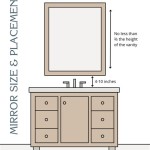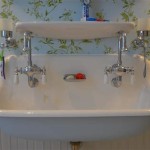How to Remove a Bathroom Sink Drain Plug: A Comprehensive Guide
The bathroom sink drain plug, while seemingly simple, can present a challenge when removal is necessary. Whether due to a clog, replacement, or general cleaning, understanding the mechanisms involved and the proper techniques is crucial to a successful outcome. Improper removal can lead to damage to the sink, plumbing, or the drain plug itself. This article provides a detailed guide to removing various types of bathroom sink drain plugs, along with key considerations and troubleshooting tips.
Understanding the Different Types of Drain Plugs
Before attempting to remove any drain plug, correctly identifying the type of plug is paramount. Different plugs utilize different mechanisms for operation, and consequently, require different removal methods. The most common types encountered in residential bathrooms include:
Pop-Up Drain Plugs: These are the most prevalent type and are characterized by a lift rod located behind the faucet. This rod connects to a pivot rod and a horizontal rod (also known as a clevis) within the drain assembly. Lifting the lift rod raises the drain plug, allowing water to drain. The removal process typically involves disconnecting the pivot rod and then manipulating the plug for extraction.
Lift-and-Turn Drain Plugs: These plugs feature a knob on top of the plug itself that needs to be lifted and turned to either lock the drain closed or release it for drainage. They generally involve a threaded post that secures the plug to the drain body. Removal often entails holding the plug body and unscrewing the knob.
Push-and-Seal Drain Plugs: Also known as push-button or clicker drain plugs, these operate by pressing down on the plug to seal and pressing again to release. They are typically held in place by an internal mechanism that may involve threads or a compression fitting. Removal can range from simply pulling the plug out after disengaging a locking mechanism, to requiring unscrewing the entire plug assembly.
Stopper Drain Plugs: These are simpler, sometimes just referred to as rubber stoppers, and are not physically connected to any mechanical components. They are simply inserted into the drain opening to stop water and lifted out to allow drainage. Removal is straightforward, usually requiring only a firm grip and a gentle upward pull.
Gathering the Necessary Tools and Preparations
Preparation is key to a smooth and efficient drain plug removal process. Assembling the correct tools and taking precautionary measures can minimize the risk of damage or injury.
Essential tools typically include:
- Pliers: Needed for gripping and manipulating small parts, especially within the drain assembly. Needle-nose pliers are helpful for tight spaces.
- Adjustable Wrench: Useful for loosening nuts and bolts within the drain assembly, particularly larger components.
- Screwdrivers (Phillips and Flathead): Depending on the type of drain plug, screws may need to be loosened or removed.
- Basin Wrench: Designed for reaching and loosening nuts in tight spaces beneath the sink. This is particularly helpful for older drain assemblies.
- Penetrating Oil: Can be applied to corroded or stuck parts to help loosen them. Apply sparingly.
- Towels or Rags: Essential for cleaning up spills and protecting the sink basin from scratches.
- Safety Glasses: Protecting eyes from debris is crucial, especially when working in confined spaces.
- Gloves: Protecting hands from dirt, grime, and potential contaminants.
- Small Container or Bowl: For catching any water or debris that may fall from the drain assembly.
- Flashlight or Headlamp: Providing adequate illumination is vital for visibility under the sink.
Before starting any work, it's advisable to shut off the water supply to the sink. This prevents accidental flooding should any pipes be inadvertently disconnected. Locate the shut-off valves under the sink and turn them clockwise until fully closed. Test the faucet to ensure the water is completely shut off. Place the container or bowl under the drain assembly to catch any residual water. Covering the immediate work area with towels will also protect the floor and prevent slipping.
Step-by-Step Instructions for Removing Different Drain Plug Types
The specific removal process varies significantly depending on the type of drain plug. The following outlines the generalized steps for each type, but slight variations may exist depending on the manufacturer and specific model.
Removing a Pop-Up Drain Plug:
Step 1: Locate and Disconnect the Pivot Rod: Positioned beneath the sink, the pivot rod connects to the lift rod via the pop-up drain assembly. Use pliers to gently remove the spring clip that secures the pivot rod to the horizontal rod (clevis). Once the clip is removed, carefully slide the pivot rod horizontally out of the drain assembly. Be prepared for some water to drip out.
Step 2: Loosen the Drain Plug: After disconnecting the pivot rod, the drain plug should be relatively loose. In some instances, the drain plug can be pulled straight out at this point. However, some plugs might have a slight ridge or obstruction that prevents immediate removal. Gently wiggle the plug back and forth while pulling upward. If resistance is encountered, proceed to the next step.
Step 3: Unscrew the Plug (If Necessary): Some pop-up drain plugs are threaded into the drain flange. If the plug does not easily pull out, try turning it counterclockwise to unscrew it from the flange. This might require some force, especially if corrosion is present. A small amount of penetrating oil applied to the threads can help to loosen the plug.
Step 4: Remove the Drain Plug: Once the plug is loose or unscrewed, carefully pull it straight up out of the drain. Take note of the orientation of any washers or gaskets that are attached to the plug, as they will need to be reinstalled correctly.
Removing a Lift-and-Turn Drain Plug:
Step 1: Loosen the Knob: Hold the base of the drain plug firmly with one hand. With the other hand, try unscrewing the knob on top of the plug counterclockwise. Some knobs may be tightly secured and require considerable force. If the knob is stuck, try applying a small amount of penetrating oil to the threads where the knob meets the plug body.
Step 2: Remove the Knob: Once the knob is loosened, continue unscrewing it until it is completely detached from the plug. Set the knob aside in a safe place.
Step 3: Remove the Drain Plug Body: After removing the knob, the drain plug body should be relatively loose. Gently wiggle the plug back and forth while pulling upward. Some lift-and-turn plugs may have a threaded post that extends down into the drain. If resistance is encountered, try turning the plug counterclockwise to unscrew it from the drain flange.
Step 4: Inspect for Debris: Once the drain plug is removed, inspect it for any accumulated hair, debris, or corrosion. Clean the plug thoroughly before reinstalling it.
Removing a Push-and-Seal Drain Plug:
Step 1: Depress the Plug: Press down on the drain plug to its lowest position, as if sealing the drain.
Step 2: Locate the Release Mechanism: Some push-and-seal drain plugs have a release mechanism that needs to be activated. This may involve a small button or a rotating section on the plug. Consult the manufacturer's instructions for the specific location and operation of the release mechanism.
Step 3: Activate the Release Mechanism (If Applicable): If a release mechanism is present, activate it according to the manufacturer's instructions. This may involve pressing the button, rotating a section of the plug, or using a small tool to disengage a locking tab.
Step 4: Pull Out the Plug: Once the release mechanism (if any) is activated, gently pull the drain plug straight up out of the drain. Some force may be required, but avoid excessive force that could damage the plug or the drain flange.
Step 5: Unscrew the Plug (If Necessary): If the plug does not pull out easily, it may be threaded into the drain flange. Try turning the plug counterclockwise to unscrew it. Some push-and-seal plugs have a nut underneath the sink that can be loosened to release the plug.
Removing a Stopper Drain Plug:
Step 1: Grip the Stopper: Firmly grasp the stopper, ensuring a secure grip.
Step 2: Pull Upward: Pull the stopper straight up out of the drain. If the stopper is stuck, try wiggling it gently back and forth while pulling upward.
Step 3: Clean the Stopper: After removing the stopper, clean it thoroughly to remove any accumulated hair or debris.
Troubleshooting Common Issues
Occasionally, unexpected problems may arise during the drain plug removal process. Being prepared to troubleshoot these issues can save time and prevent further complications.
Stuck Pivot Rod: If the pivot rod is corroded or stuck, applying penetrating oil to the rod and the surrounding area can help to loosen it. Allow the oil to soak for several minutes before attempting to remove the rod. Gentle tapping with a small hammer can also help to break the corrosion.
Corroded Threads: Corroded threads can make it difficult to unscrew drain plugs. Applying penetrating oil and allowing it to soak is the first step. If the plug remains stuck, try using a wrench to apply more force. Be careful not to damage the plug or the drain flange. Heat, applied carefully with a heat gun, can also help to loosen corroded threads.
Stripped Screws: If a screw is stripped, it can be difficult to remove. Try using a rubber band or steel wool between the screwdriver and the screw head to provide more grip. Alternatively, a screw extractor tool can be used to remove the stripped screw.
Broken Drain Plug: If the drain plug breaks during removal, it may be necessary to use pliers or other tools to extract the broken pieces. Exercise caution to avoid damaging the drain flange or the surrounding plumbing.
Inaccessible Drain Assembly: In some cases, the drain assembly may be located in a tight or inaccessible space. A basin wrench is designed specifically for reaching and loosening nuts in these situations. Alternatively, removing the sink from the countertop may provide better access to the drain assembly.
Loss of Small Parts: Keep a close eye on all small parts, such as washers, gaskets, and clips, during the removal process. These parts are essential for proper reassembly. Store them in a safe place to prevent them from being lost.
By understanding the different types of bathroom sink drain plugs, preparing with the right tools, and following the appropriate removal steps, anyone can successfully remove a drain plug for cleaning, repair, or replacement. When encountering difficulties, troubleshooting techniques can help to overcome common obstacles. Remember to exercise caution and prioritize safety throughout the process.

How To Remove A Bathroom Sink Stopper Take Out Pop Up Drain From

Quick Tip 26 Pop Up Stopper Sticks Misterfix It Com

How To Replace A Sink Stopper Quick And Simple Home Repair

How To Remove Drain Plug From Sink
How To Get A Bathroom Sink Plug Removed When It Won T Un Quora

How To Replace A Pop Up Sink Drain Remove The Old Bathroom Stopper Repair

Fast Sink Drain Stopper Repair

Need To Remove A Bathroom Sink Stopper It S So Easy

How To Replace A Sink Stopper Quick And Simple Home Repair

9 Easy Steps To Remove A Bathroom Sink Stopper With Pictures
Related Posts







